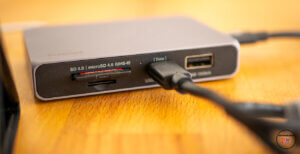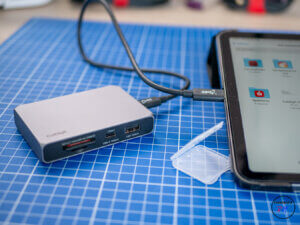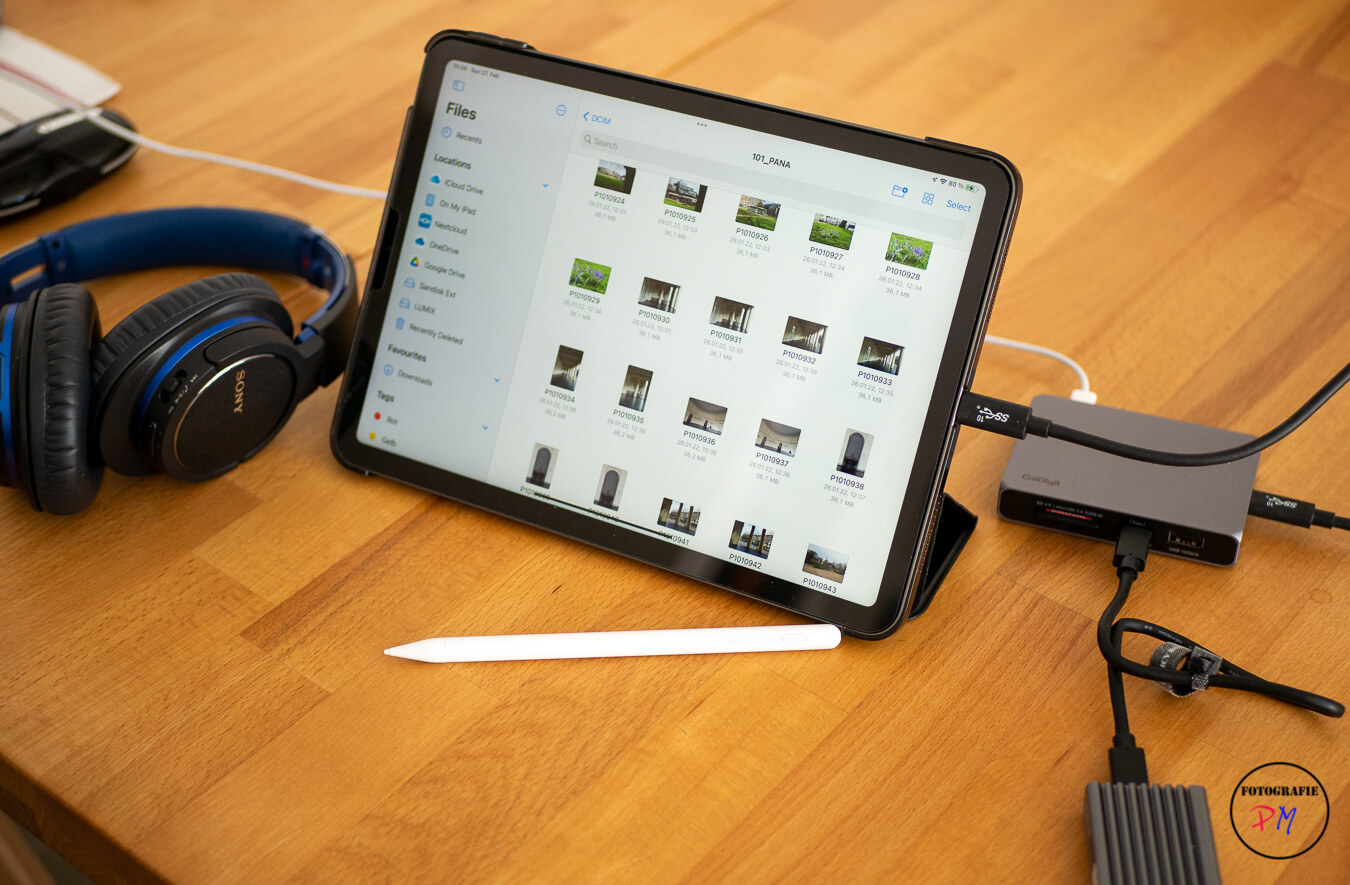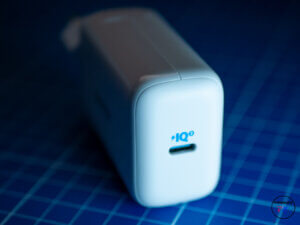CallDigit USB-C Hub for iPad and MacBook
The USB-C port is becoming more and more established and is the preferred connection for more and more devices, even though USCB-C only describes a connector for now.
Introduction
 In the meantime, not only the MacBook Air but also the iPad Air have a USB-C port, which makes it much easier to connect other devices. But actually, the two ports on the MacBook Air are Thunderbolt ports, which are once again a bit faster than USB-C Gen 1 or Gen 2. The connection on the iPad Air is a relief.
In the meantime, not only the MacBook Air but also the iPad Air have a USB-C port, which makes it much easier to connect other devices. But actually, the two ports on the MacBook Air are Thunderbolt ports, which are once again a bit faster than USB-C Gen 1 or Gen 2. The connection on the iPad Air is a relief.
But usually there are never enough ports available, so a HUB has to help here. Today I would like to introduce you to the USB-C hub from CallDigit, which is around 90, – € not exactly cheap, especially in the area of HUB, because there are masses of offers here.
Please have a look at the video:
Connections
 The CallDigit Soho has an HDMI, a Displayport and a USB-C port on the back, which is also responsible for PD, so where you can plug in the charger. On the front, there is a card reader for micro and regular SD cards as well as another USB-C port and a USB-A port.
The CallDigit Soho has an HDMI, a Displayport and a USB-C port on the back, which is also responsible for PD, so where you can plug in the charger. On the front, there is a card reader for micro and regular SD cards as well as another USB-C port and a USB-A port.
The USB-C port on the right is used to connect the MacBook or iPad with its connection cable.
This makes it very convenient to copy pictures and video clips from the SD card directly to an external drive.
With the iPad Air, the advantage is that video clips no longer have to be copied locally to the iPad for editing in Lumfusion, but can be edited directly from a fast SSD hard drive.
What might be missing is a jack plug, e.g. for headphones, and possibly an RJ45 port to connect the respective device to a LAN. For the former I use a Bluetooth headphone and the latter I need only for the MacBook, if a backup runs here over Timemasschine.

It is very easy to work with and the device is very compact.
Power supply
 As already mentioned, the US-C connector on the back of the device is used to plug in the respective power supply. However, it can happen with the original power supply of the iPad Air as well as the MacBook that you get the message that the respective device is not charged.
As already mentioned, the US-C connector on the back of the device is used to plug in the respective power supply. However, it can happen with the original power supply of the iPad Air as well as the MacBook that you get the message that the respective device is not charged.
This is also indicated by the device, and due to the additional power requirement for the USB-C hub and other connected devices, the power is not sufficient to charge the battery as well. Since tilt then only another, stronger power supply. I therefore got myself an Anker device with 65 W for the MacBook, for example, which is then sufficient for this combination.
Conclusion
For both a MacBook and an iPad (Air or Pro), the CallDigit USB-C is quite ideal. It offers the necessary ports and is still very compact. Thus, it also finds space in a backpack and thus you have everything with you to conveniently back up pictures, for example.
Which USB-C hub do you use for which device? Let me know in the comments.
ciao tuxoche


